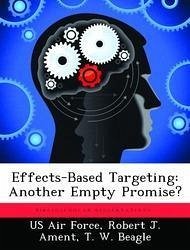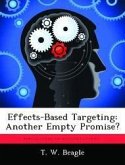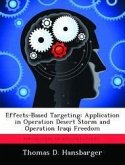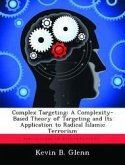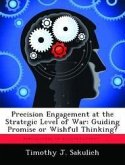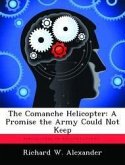What is effects-based targeting and from where did this concept come? Is it based on a coherent theory; and, if so, has the USAF incorporated it into its doctrine and operations? Is there more yet to do? These questions form both the focus and format of this study, which examines the evolution of effects-based targeting. Specifically, this study asks how effectively has the USAF incorporated the concept of effects-based operations into its procedures for targeting and combat assessment. To answer this question, the study defines effects-based targeting, asserting that commanders should direct airpower against targets in ways that produce specific, predetermined, military, and political effects. This study explores the historical development of effects-based targeting theory and then conducts a focused comparison of four major air operations-Pointblank, Linebacker II, Desert Storm, and Allied Force-in order to survey US airpower's actual combat experience with regard to effects-based operations. This study determines that senior decision makers have always been interested in creating specific effects rather than simply destroying targets; however, as a whole, the USAF has been inconsistent in employing effects-based operations across the spectrum of conflict. American airpower has accomplished its most significant improvements at the tactical level of war but is less reliable in creating operational and strategic effects. In a similar vein, airpower has become very effective at producing direct physical effects; and it is becoming increasingly capable of creating certain widespread systemic effects. Generally, though, the ability to even predict-much less generate-specific psychological effects remains yet a hope and may, in fact, act as a virtual ceiling on the potential of effects-based operations.
Hinweis: Dieser Artikel kann nur an eine deutsche Lieferadresse ausgeliefert werden.
Hinweis: Dieser Artikel kann nur an eine deutsche Lieferadresse ausgeliefert werden.

